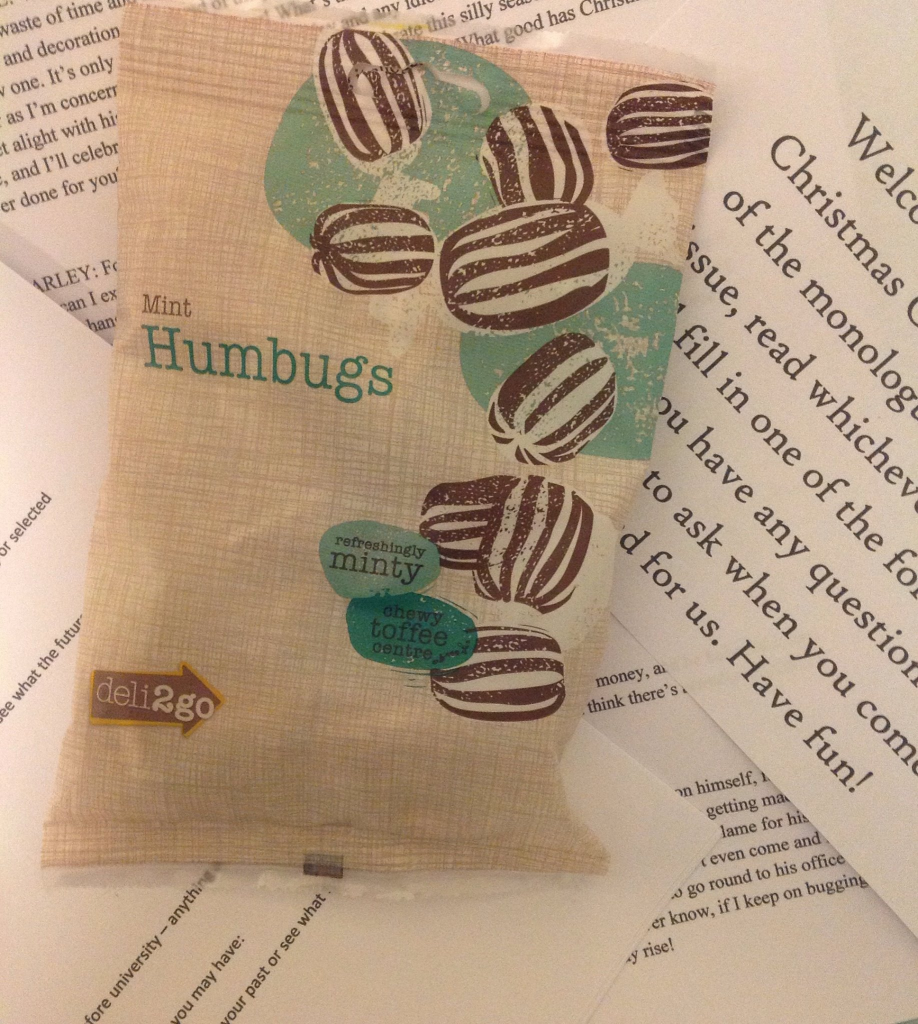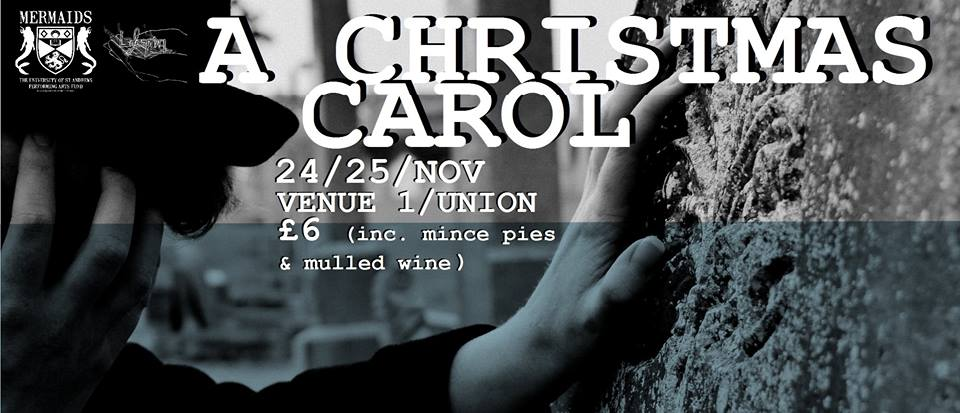
Winter Tames Man, Woman, and Beast
December usually sees a plethora of pantomimes, plays and musicals popping up everywhere, from the national theatre to your local am-dram society! They are wonderful ways to celebrate the festive season, and to distract us from the worries and stresses it brings. Lots of people like to return to old favourites for nostalgic comfort. We might start to see these stories in a new light as we grow and gain experiences. The same tale can teach us something new every year.
In this month’s blog our Chamberlain Critic tells us all about how they re-interpreted A Christmas Carol for a modern audience and adapted it to the stage. The Yorick team’s Christmas cracker fun fact is that this was the first time the Chief Jester and Chamberlain Critic worked together on a play!
~*~

‘Marley was dead: to begin with.’
The opening line of Charles Dickens’ A Christmas Carol is one that has stayed with me ever since I first read the book in secondary school. The mention of death at the start of a Christmas story is jarring, but it drew me in and made me want to continue reading. I loved studying the book, especially our assignment where we had to rewrite and modernise the first part of the story. I set my version in Edinburgh, although my Scrooge lived on Leaf Walk instead of Leith Walk as I’d misheard my Dad when I asked him where he thought a present-day Scrooge would reside! I enjoyed this assignment so much, in fact, that I ended up rewriting the whole story – a source of both praise and bemusement from my English teacher. I also went through a phase of wearing fingerless gloves, so I could try and look more like my favourite Victorian characters. While I eventually stopped wearing gloves in the middle of summer, my love for Dickens’ work didn’t diminish – this was only the start of my journey to bring my own version of A Christmas Carol to life.

Photo Credit: Catriona Scott
During my second year at university, I had written and directed my first play. It was heavily inspired by Shakespeare’s Richard III and set in space. Later that year it was time for A Christmas Carol to get its own twist – I set it in my university town, and the first change I made was making the firm Scrooge & Marley into a letting agency. This clearly established Scrooge as an unpleasant character due to the difficulties hundreds of students face securing rental properties in town! Perhaps the most significant change I made was Scrooge’s gender – Ebeneezer no more, but Elizabeth. This was partly due to the amazing audition given by the actress I chose for the role, but it was also because this gender-swap allowed me to address more modern political issues. In the final Christmas Past shown to Scrooge, we see Elizabeth reject her fiancée, Emily, who accuses her of hiding who she really is in order to rise through the ranks at work, and of not wanting to marry her despite the introduction of the Civil Partnership Act. The actresses played this scene to perfection, and, even though I knew what was coming, it made me tear up on opening night. Some other, more funny changes were made, such as Nephew Fred presenting his aunt with a ‘Bah Humbug’ Santa hat, and the attendees at the Fezziwig Christmas party dancing to Slade. ‘IT’S CHRISTMAAAAAAAAAAS!’, indeed!
The music was, in fact, one of my favourite aspects to modernise. While in Dickens’ original a carol singer regales Scrooge with ‘God Rest Ye Merry, Gentlemen’, I had it playing on the radio in the Cratchit’s house. Wizzard’s ‘I Wish It Could Be Christmas Everyday’ had Cratchit dancing on his desk, and Shakin’ Stevens’ ‘Merry Christmas Everyone’ was the soundtrack to the final bows and had the whole audience clapping along. My favourite piece of festive music played a part in one of my other significant Dickensian departures – actually showing Marley’s death. Trans-Siberian Orchestra’s rendition of ‘Carol of the Bells’ begins with an interpolation of ‘God Rest Ye Merry, Gentlemen’, and I had this play under Scrooge and Marley’s dialogue. The music builds as Marley leaves the office and walks towards the road where he will meet his fate, with the sudden burst of drums and electric guitars marking his departure from the earthly realm. Another of my favourite changes was having the actors playing the ghosts – Marley, Past, Present and Future – also play other roles. It meant the poor actors had more lines to learn, but I enjoyed using this doubling to subconsciously signal to the audience. Martha Cratchit doubled as Christmas Past, focussed on love and family, Mr Fezziwig doubled as Present, bringing Christmas cheer wherever he went, and Marley doubled as Christmas Future, showing Scrooge she’ll go down the same road as her old business partner if she doesn’t change her ways.

Photo Credit: Mermaids Society University of St. Andrews
I’m glad to say that my St Andrews version of A Christmas Carol was very well received – not least because a mince pie and glass of mulled wine were included in the ticket price! Just as with pantomime, the wealth of inside jokes referring to local issues and businesses were a particular hit, although as I re-read the script now nearly ten years later, some of these are sadly very outdated! It was an absolute joy to put my own spin on one of my favourite stories of all time. Of all the plays I’ve written, from my Edinburgh Fringe debut to scripts from my Playwriting masters degree, A Christmas Carol was by far the most fun to adapt and direct. After all, none of my other scripts required ugly Christmas jumpers and the music of a British glam rock band! A Christmas Carol is a story I still love to this day and re-read every December. I rewatch it too, but my editors have told me not to get into the debate about which version is the best or this blog post will go over the word limit.
~*~
(It’s the Muppets version, obviously).